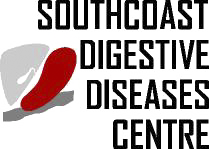Rising Incidence of Oesophageal Cancer: Risk factors & Management
Five year survival of oesophageal cancers is approximately 10% globally. Early cancers are operable. Of the two types of oesophageal cancers we see, incidence of squamous cell carcinomas (SCC) is declining while there is progressive rise of the incidence of the adenocarcinoma (AC) of the oesophagus. This article focuses on the identification of at risk individuals.
INCIDENCE
Squamous cell carcinoma (SCC): Incidence is 1.5 to 2.5 per 100,000 population globally. Much higher incidence is reported from certain parts of China, Iran, South Africa and India.
Adenocarcinoma (AC): Incidence has risen from 1.8 to 2.5 per 100,000 popula- tion in the western countries.
EPIDEMIOLOGY
SCC: The prevalence of SCC is equal in both males and females. Much higher prevalence has been reported from non-western countries such as China, Africa and Iran. Mainly seen in the lower socio-economic class among smokers particularly cigar smokers. Both the type (whisky and spirits are worse) and quantity of alcohol increases risk of SCC. Hot (temperature) tea drunk in Iran and betel nut chewed in India has been implicated. Achalasia cardia, tylosis and caustic ingestion are predisposing factors.
AC: This is a disease of male Caucasians. AC is associated with long history of reflux symptoms, Barrett’s oesophagus, obesity, negative H.Pylori serology (protective effect of H.pylori) Zollinger Ellison syndrome and Scleroderma. Risk imparted by Barrett’s oesophagus is potentiated by smoking. Previous cholecystectomy may have a small role in allowing bile reflux. Low fibre and high animal protein diet tend to increase risk.
Adenocarcinoma (AC) is a disease of overweight /obese male Caucasians with long history of reflux where as squamous cell carcinoma (SCC) is a disease of blacks, Hispanics and Asians who smoke tobacco and drink alcohol. Such patients with symptoms should be gastroscoped first prior to empirical proton pump inhibitor therapy.
PATHOBIOLOGY
SCC has early local lymph node invasion and metastasizes to liver, bone , bone marrow and lungs in 30-40% cases. AC metastasizes to coeliac and perihepatic lymph nodes.
CLINICAL: Dysphagia presents when the oesophageal lumen is down to 13mm or less. Weight loss and iron deficiency with or without anaemia are other reasons for presentation.
DIAGNOSIS is established with gastroscopy and biopsy and this procedure also determines the location of the tumour within the oesophagus.
STAGING: Endoscopic ultrasound (available in Brisbane) can be used to deter- mine the depth of penetration of the oesophageal wall, perioesophageal and coeliac lymph node involvement and undertake fine needle aspiration of any suspected lymph node at the same time. PET scan is good for localizing occult and distant metastasis. Thoracoscopy and laparoscopy are clearly best for diagnosing regional lymph node involvement and occult peritoneal disease and are best left to the surgeons involved. The 5 year survival for stages I-IV are 60%,31%,20% and 4% respectively.
MANAGEMENT: Of some 14,520 people diagnosed with oesophageal cancer yearly in the USA, 13,570 die. Five year survival improved slightly from 5%(1974- 76) to 13% (1992-98) over time. Some 30-40% (stage I-II) are potentially respecta- ble yet only 5-20% of these are alive at 3-5 years. Platinum based neoadjuvant chemoradiotherapy prior to surgery has improved complete respectability of stage I-II tumours but difficult to demonstrate any survival advantage. However, chemoradiotherapy has improved survival for inoperable stage III-IV disease.
RECOMMENDED FURTHER READING:
Bonis AL et al: Epidemiology, pathobiology and clinical manifestations of oesophageal cancer:www.uptodate.com, 2006. Saltzman JR: Diagnosis and staging of oesophageal cancer:www.uptodate.com, 2006.
Swanson S: Surgical management of localized oesophageal cancer: www.uptodate.com,2006.
Forastiere AA et al: Radiation therapy, chemoradiotherapy and neoadjuvant approaches for localized oesophageal cancer: www.uptodate.com,2006.

